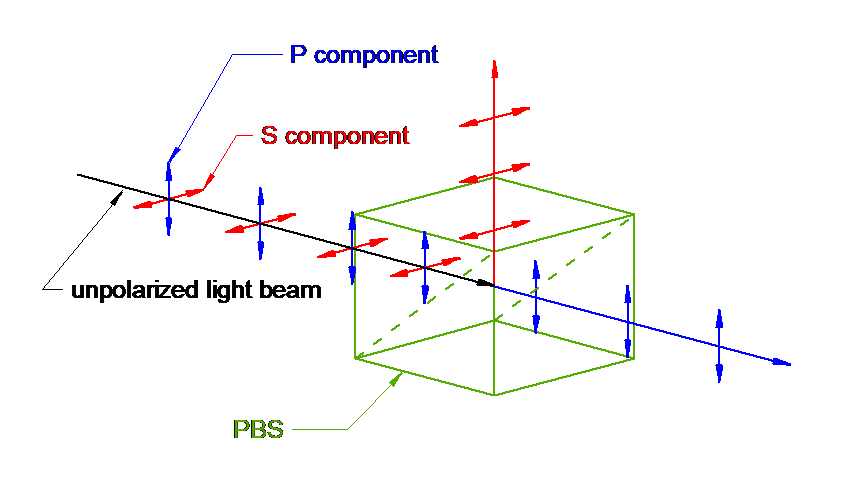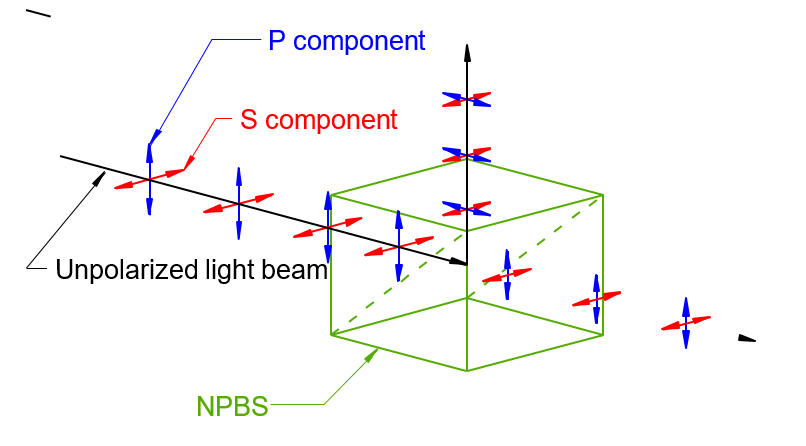Polarizing vs. Non-Polarizing Cube Beam Splitters: Choosing the Right Type
Polarizing vs. Non-Polarizing Cube Beam Splitters: Choosing the Right Type
Cube beam splitters function like ‘traffic directors’ for light to divide incoming beams into two or more paths. Are you comparing polarizing and non-polarizing cube beam splitters? Each design interacts with light differently, so the right choice depends on how you need the beam to be managed in your system.
Precise polarization control
A PBS or polarizing beam splitter divides light according to its polarization state. When light enters, the P-polarized component (parallel to the plane of incidence) passes through, while the S-polarized component (perpendicular to the plane of incidence) reflects. This effect comes from a thin polarizing film applied to the hypotenuse surfaces of two bonded right-angle prisms.

- PBSs deliver a high extinction ratio that often exceeds Tp: Ts > 1000:1.
- They minimize optical loss by directing each polarization efficiently, so both output paths maintain intensity.
- Because they split polarization states precisely, they reduce the cross-talk and energy losses common in conventional beam splitters.
Their design also eliminates the need for extra components to manage polarization. Engineers can configure them for a wide wavelength range, from ultraviolet through visible light and into the infrared spectrum.
Should you use a PBS?
Researchers use polarizing optical beam splitters in laser experiments to manage beam quality and direction, while quantum optics relies on them to separate and analyze entangled states. They keep signal channels distinct and efficient in optical communication systems. Imaging setups and interferometers depend on PBSs to eliminate polarization-related distortions. They also deliver precise polarization measurements in optical metrology.
Equal Polarization division
A non-polarizing beam splitter (NPBS) divides light into two beams, but each output beam remains (mostly) unchanged regarding polarization state. Unlike polarizing beam splitters, NPBSs are designed to keep the splitting ratio stable across different polarization states to minimize dependence on input orientation.

Non-polarizing beam splitters maintain a stable splitting ratio with only minor sensitivity to polarization. They can be designed for different intensity splitting ratios such as 50/50, 70/30, 90/10.
Should you use a non-polarizing beam splitter?
NPBSs are the right choice when you need to split beam intensity evenly while maintaining polarization. This is why they are widely applied in metrology (where they are used in interferometers for high-precision measurements) and in biomedical imaging (where they help produce accurate, high-quality images without polarization-related distortions).
A non-polarizing optical beam splitter is especially valuable in systems that handle light with varying polarization states but still require consistent and unbiased splitting performance.
Our team here at Light Works, LLC can help you choose the right beam splitter. Email info@LW4U.com to discuss your requirements.
